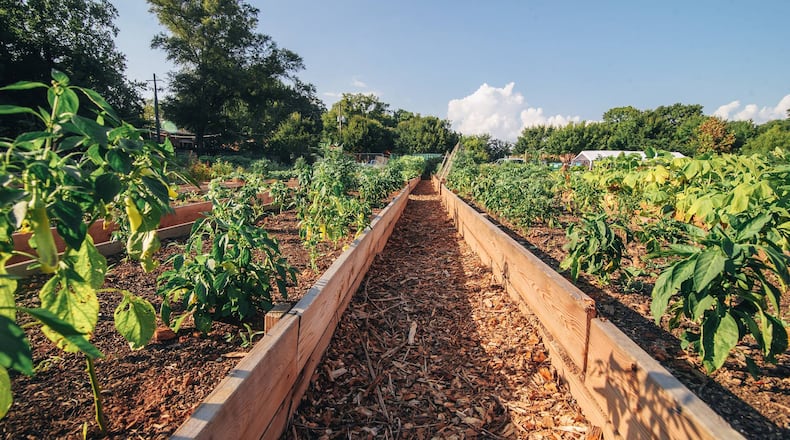As residents continue to struggle with joblessness and food insecurity in light of the coronavirus pandemic, and demand for rental assistance is high, Gwinnett County is spending hundreds of thousands of dollars in intended relief money to buy fruit trees that may not produce food for the public for several years.
Gwinnett County spent more than $300,000 of federal coronavirus relief money on fruit-bearing trees and shrubs, which were planted in 19 county parks or community gardens.
Residents will be allowed to pick the fruit and nuts, and the county plans to place signs in areas where trees were planted to let people know that there is food available there. But many of the plants may not mature until after the pandemic ends.
In addition to the 2,580 plants that will bear fruit, the county also planted 9,800 plants that are good for bees and other pollinators, including hydrangeas and azaleas.
The plants cost a combined $306,443.
Data from the Atlanta Regional Commission says more than 12% of Gwinnett County residents used a food bank since the pandemic was declared in March 2020. Nearly half of all residents said the coronavirus was a threat to their finances, according to the survey, and a quarter were furloughed or laid off. More had their hours cut or their wages reduced since last March.
Community Services Deputy Director Lindsey Jorstad said in a Tuesday presentation to Gwinnett County commissioners that about 80,000 county residents are food insecure. While some of the plants could produce fruit within a year, others “may not mature for three or four years,” Jorstad said in a statement.
“Certainly it’s a good idea to look to the future, but you have to deal with what is right now,” said Linda Mann, director of Care Pointe Community Ministries. “Planting fruit trees would not be high on our priority list.”
Still, Mann said, the amount spent in federal CARES Act relief funds was “not that much money.” Gwinnett received $163.4 million in CARES Act funding last April, with a deadline to spend it by year’s end. Mann said her group had received $50,000 from that allocation.
The county planted peaches, plums, apples, figs, pecans, blueberries, blackberries and muscadines.
“I don’t know that that’s the best way,” Mann said of the plantings. “That is a way.”
Fruit that is not picked by residents will be harvested by county staffers to be distributed to seniors and others.
Stephanie Cho, the executive director of Asian Americans Advancing Justice — Atlanta, said she was OK with the county buying trees “if they actually feed people with it.”
“I would like to see the CARES money used for actual fruit for people who need it,” she said. “As long as they’re using other money for fresh fruit and food distribution, it’s fine.”
Jorstad said in a statement that the non-fruit plants would help strengthen the population of bees, moths, hummingbirds and butterflies, and improve the area’s ecology. She did not respond to questions about why the county was spending coronavirus relief money on something that might not produce food for several years.
“This investment bolsters a program already in place to address food insecurity and will be available to residents long after the COVID-19 pandemic,” she said in the statement.
Additionally county commissioners on Tuesday agreed to spend $120,220 of CARES Act money on 10 demonstration kitchens; nine at the community gardens and one mobile unit. The units will be used to show people how to cook and preserve fruits and vegetables like those that are grown in county parks and community gardens.
About the Author
The Latest
Featured



